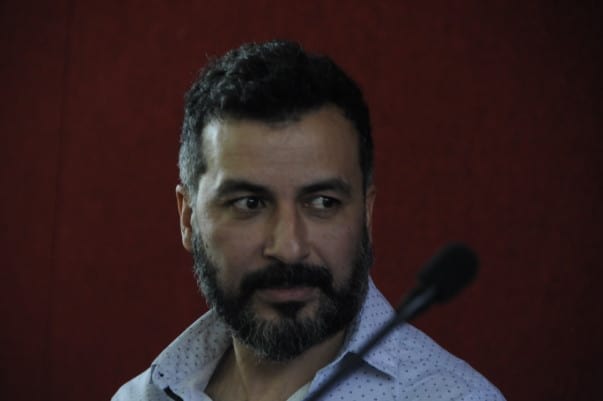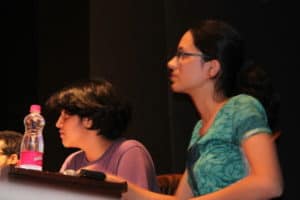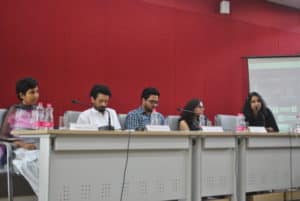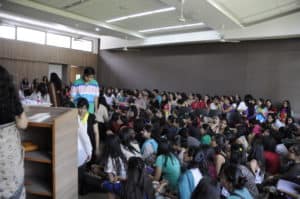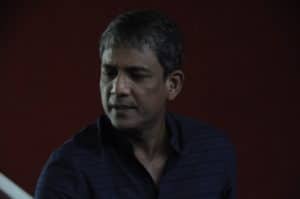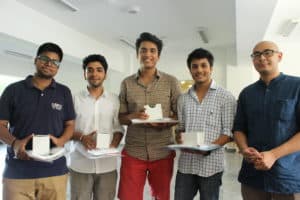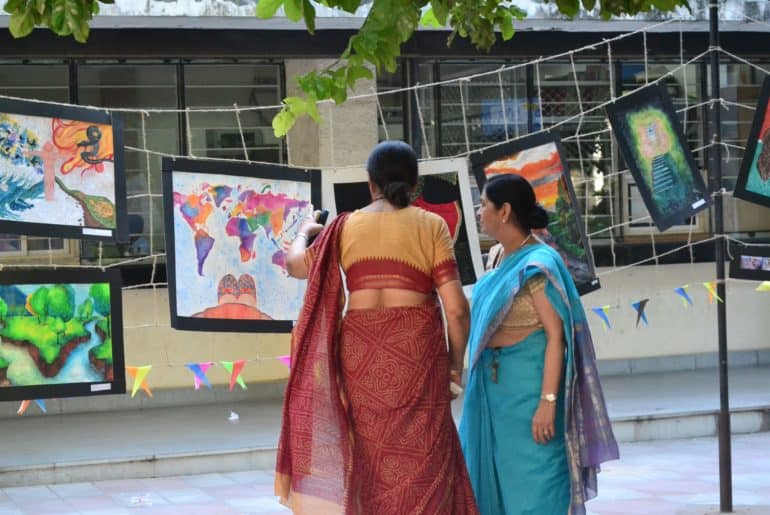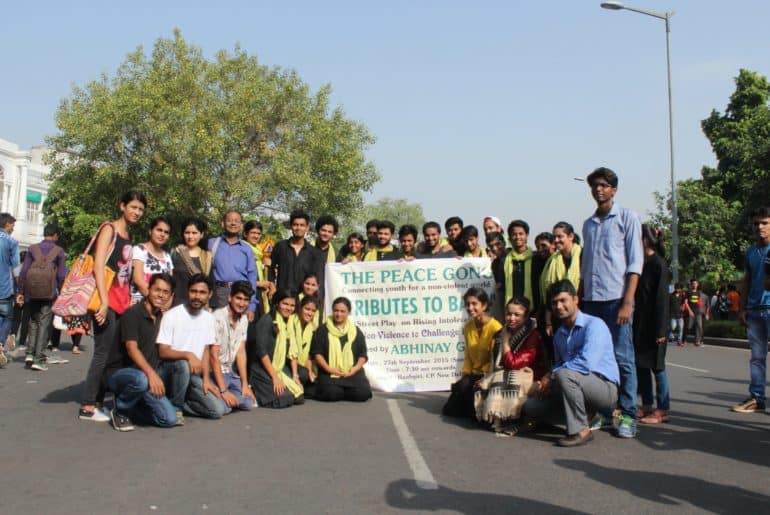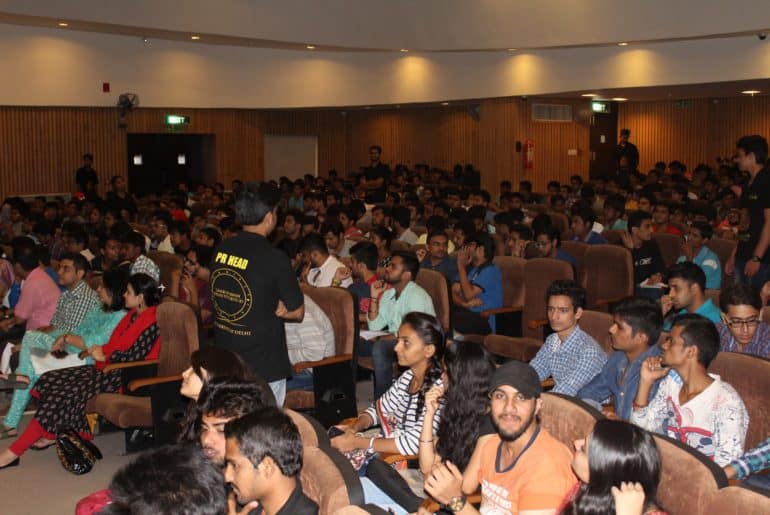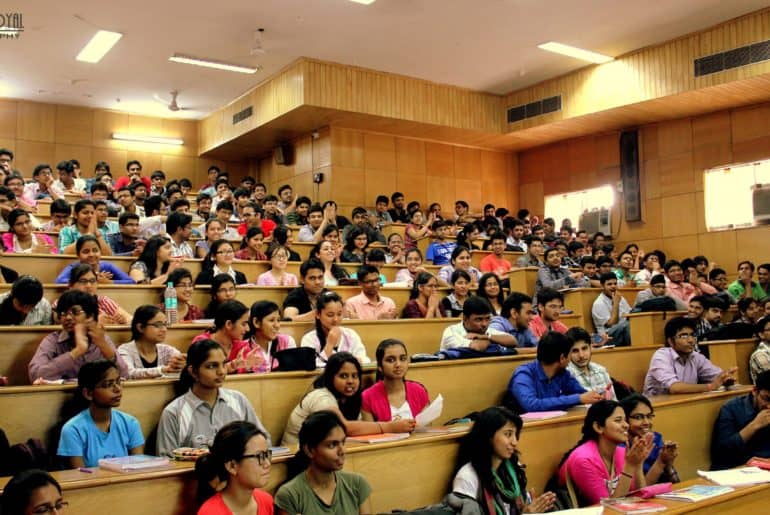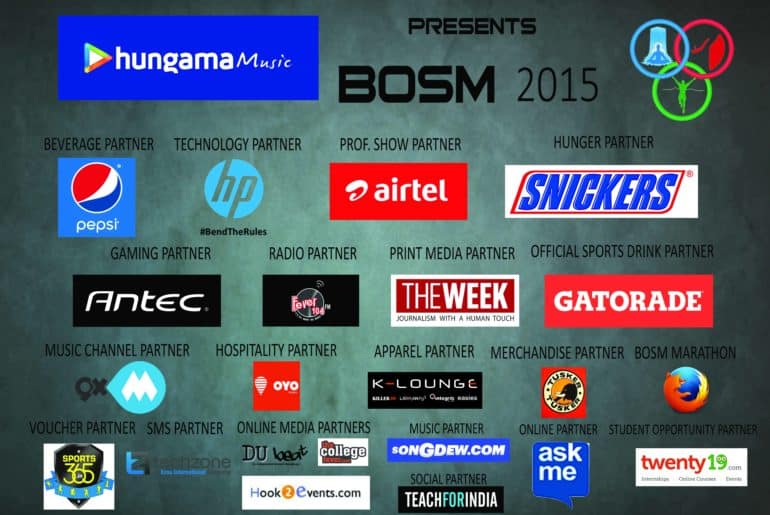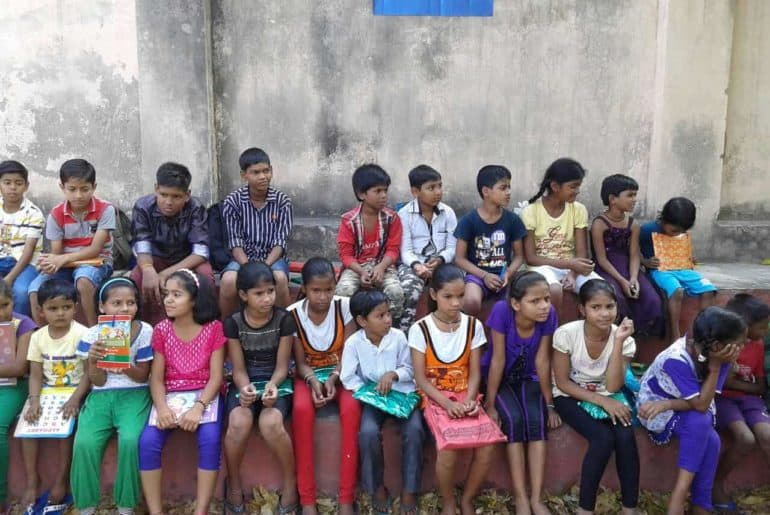The Department of Journalism at Lady Shri Ram College for Women kicked off its Annual Academic Meet, Juxtapose 2015 on October 7. The theme for this year’s meet was ‘Deconstructing Identities, Reconstructing Perceptions’ and shined through in the topics of the various events.
Pre Juxtapose, 7 October- All India Media Meet
The issue of freedom of expression in the light of recent killing of journalists was subjected to heated discussion at The All India Media Meet of Department of Journalism, Lady Shri Ram College on 7th October 2015. The discussion shed light upon the subjective issue of freedom of press. The major issues of whether killing of journalists is an ultimate resolution to the “offensive” content produced by media was put to discussion. The major issues addressed during the course of discussion were the need of media and government to be independent bodies, inadequate self-regulatory mechanism prevalent in media, how killing of journalists is a direct consequence confrontational journalism.
The conference finally sought to address the two major issues of implementing an ideal law exclusively for the safety of journalists and the question of the actual identification of journalists considering how the concept of citizen journalists has led to ambiguity in the definition of journalists. Other issues of media blackout,the thin line of difference between hate speech and criticism and the leading consequences of defamation of judiciary by the press were address.
The debate whether an independent body other than the Press Council of India is required for safeguarding the interests of journalists was the final question addressed towards the end of the discussion. The discussion concluded with the following recommendations by the delegates of the committee –
- Creation of a committee that gives licenses to freelancers and not citizen journalists and ensures that these licenses are not misused.
- Ensuring that the committee formed shall ensure legal safety of journalists.
- Ministry of Information and Broadcasting should put forward these recommendations to the Parliament.
- Periodic meetings like AIMM must happen frequently to address these issues.
Day 1, 8 October- Turncoat Debate, Panel Discussion and AdMad
The topic for the Annual Turncoat Debate – Vox Pop at Juxtapose 2015 was whether film certification works in favour of the state or the public. Ideas like state propaganda, state mandate, to name a few, surfaced. Speakers spoke of how the Indian government compresses its citizens into a monolithic identity while at many a times completely disregarding the plurality of the country and on the other hand, how the state’s “parental attitude” was essential and justified.
‘Kissa Kursi Ka’ was a movie cited as an example by many speakers. However, as felt by the judge, Ms. Ishita Tiwary, what happened to the movie after it was banned wasn’t talked about by the speakers. This was an integral part as it shows the lengths the state can go to, to prevent anything that goes against its interests. After drawing comic reactions to a reference by speaker Chandrashekhar to Ragini MMS and how it had a “mentally scarring” effect on children, he went on to win the debate. The second and third positions were bagged by Naman Malhotra and Kushal Mishra.
The panel discussion, the second event of the day, was on the topic, “Media’s content: A state of compromise or progression?” The panelists included eminent personalities from the field of media – Abhinandan Sekhri, Shoma Chaudhary, Ritu Kapur and Supriya Sharma. Anshul Tewari, Founder and Editor-in-Chief of YouthKiAwaaz.com, was the moderator.
“Digital media has really shot up in the last 7-8 years. Though it has received a fair share of criticism but it has emerged as a powerful tool for people to speak up,” said Anshul Tewari. “Yes, digital media is limited there is no denying but I think over the next few years it will go deeper,” said Ritu Kapur, co-founder- The Quint. They further went on discussing the impact of digital media to which Abhinandan Sekhri’s stance was very unambiguous. According to him it’s a screen and it doesn’t really matter whether it is NDTV or News Laundry or Scoop Whoop. Also, he said that he believes that the number of views is not a yardstick to judge whether something has impacted people or not, rather, it’s the time they are spending in reading it which speaks.
On comparing the online media with print, Supriya Sharma, recipient of the Chameli Devi Award, given for excellence in Journalism, pointed out that online media is an interactive media with young readership and a sense of feedback. For her it is really very exciting to be able to influence the young minds of the country.
Towards the end the panelists discussed free speech and reasonable restrictions to which Abhinandan responded by saying that he is an absolutist and does not believe that any restriction is reasonable. His opinion was seconded by Ms. Shoma but with two caveats, which were – factuality and incitement to violence. The session concluded with a question and answer session with the audience where in issues like gate keeping, hate speeches and corporate ownership were discussed.
The AdMad competition was judged by Professor Shikha Jhingan and Professor Vibhushan Subba, from the Department of Journalism at LSR. One team that stood out was the one given a “mind reader” to sell. Their mind reader was a pair of flashily lit glasses. Team 4, consisting of Khushwinder and Dhruv, from who advertised an online grocery store bagged the first position, followed by Team 8, Manan, Akhil, Ishan and Vikas from Netaji Subhash Institute of Technology. The second runner up was Team 10, consisting of Manan Batra and Tushar Singh from Sri Venkateswara College.
Day 2, 9 October: Paper presentation, Panel Discussion, Media quiz
“Media presents to the audience what the audience wishes to see.” A paper presentation competition, Samantha vs. Savitri, organized by the Department of Journalism at LSR, kicked off the final day of their Annual Academic Meet – Juxtapose 2015. This platform acted as a podium where speakers presented their papers, on the question of representation of gender identities in 21st Century Sitcoms. The five participants present here had been shortlisted on the basis of their abstracts submitted much in advance. The event was judged by Ms. Abhija Ghosh, a student of Cinema Studies at the School of Arts and Aesthetics, Jawaharlal Nehru University.
The presentations highlighted how women in particular are stereotyped as being submissive, prudent, and emotional with lack of strength. While the debate concentrated move over the roles of women, reference to other genders were also brought in by speakers. They mentioned how genders apart from the males and females are hardly mentioned as they are considered “unnatural”.
One of the participants, Sukanya, from Daulat Ram College, said, “Ironically, the small screen acts a harbinger of change”. But what change are we talking about if the whole concept of sitcoms dwell on reinforcing stereotypes in just a “funny or new” manner. Indian television serials show mainstream drama projecting the relationship between a mother-in-law and a daughter-in-law as being manipulative and competitive to gain the sympathies of the son/husband.” Another participant, Azra Qaisar, who also happened to be the winner of this event, quoted Naomi Wolf, “Women are allowed to have a body or brain but not both”. A student of LSR itself, her paper focused on the women characters in the famous American sitcom The Big Bang Theory.
The title of the panel discussion of Day 2 was Alternative vs. Mainstream Cinema, will the spectrums ever converge? The panelists on board were Mr. Pankaj Butalia, an award winning documentary filmmaker known for his films like Moksha and Textures of Losses; Mr. Aamir Bashir, a renown Indian actor and filmmaker, known for his work in films like Harud and A Wednesday; Mr. Adil Hussain, an Indian stage, film and television actor most known for his work in Life of Pi and English Vinglish; and Ms. Shohini Ghosh, is the Zakir Hussain Professor of media at the AJK Mass Communication Research Center, an essayist on popular culture and a documentary filmmaker. The discussion was moderated by Ms. Abhija Ghosh, who is a student of Cinema Studies at the School of Arts and Aesthetics at Jawaharlal Nehru University. The discussion began with the moderator asking each panelist to define what mainstream and alternative films are to them.
One particular analogy given by Shohini Ghosh, was that of “the king’s highway and the detours” referring to the mainstream and alternative films, respectively, was used extensively througout the debate. Ms. Ghosh looked more towards the intersection of the two ways, and the ways in which each has its own importance. She quoted the example of Christopher Nolan, as to how he converged the king’s highway and the detour to completely redefine film form. She said, she prefers the term ‘independent cinema’ over alternative cinema. Documentaries, she believes, create the ground for content based movies in the mainstream cinema and have an invisible network of screening and reaching the audience.
Mr. Aamir Bashir wondered where the “dung on the detours” would go with the “swachh abhiyaan” happening. He said that the problem was of appropriation of alternative into the mainstream and how the mainstream tries to proach the alternative. He questioned the distribution system and market economy and how these forces were not willing to back alternative content. He also clearly mentioned, how he wasn’t very optimistic for the future of alternative films in India.
Mr. Butalia was concerned with documentaries and the lack of importance given to them in conversations about films in general, saying that it was “almost as if they do not belong to the category of films“. In the words of Mr.Batalia, we look at the “content” and “form” to distinguish between alternative and mainstream cinema. As the content gets more and more acceptable, it gets appropriated into mainstream media. The demands of commerce do not constrain the alternative film whereas a formula is literally laid out to govern the mainstream cinema; while the alternative cinema experiments more with the form. According to him, creativity is the defining factor in alternative media.
Adil Hussain said that all people who act, make or criticise movies are only human. Human nature and tendencies lead to mainstream media to be more widely accepted than the alternative, simply because it is more familiar and more acceptable to the masses. According to him, the greatest flaw in the medium of film is the need for money to begin making it. While comparing films to theatre, he mentioned how theatre needs no such investment. He defined alternative or more artistic films as those which put the characters and content under an electron microscope, giving them a completely new perspective rising from extreme curiosity and respect towards the arts.
The final event of Juxtapose 2015, was the media quiz. This year’s quiz was conducted by QuizCraft Global Knowledge Solutions. The Quiz Master was Mr. Adittya Nath Mubayi, Director of QuizCraft Global.
The quiz began with a preliminary round of 25 questions. A total of 65 teams participated out of which 6 made it to the final. Each team consisted of two members. To break the ice, Mr. Mubayi interacted with each of the final teams and asked them which journalist they would become, if given a chance, for 60 seconds.
The teams that made it to the final quiz had some really interesting names like Inter Galactic Hanuman Sena, Merry Pranksters and Bazingaa to cite a few. In the first round, each question was backed up by 2 hints. Each team had to recognize a person. First the audio was shown then the first hint would be a fact and the second would be the photo. Answering without using hints meant 60 points while it came down to 40 and 20 with the use of the first and the second hint respectively. The second round had direct oral questions. The third round was named Look here, Look hear which included audios and visuals. It covered questions right from the iconic interview with Princess Diana to who the voice of the Delhi Metro is. The fourth round again had direct questions. The last round was the buzzer round. This was a +40 and -20 round and had eight questions. The interesting part about the quiz was that each round began with a question from the audience and ended with the same and also when no team could answer, it was passed on to the audience. For every correct answer from the audience Amazon Kindle e-vouchers were given as gifts.
Team Chapter 11 which had Sreshth Shah of Amity University and Raletim of IGNOU won the quiz with a total of 440 points, they were given a cash prize of Rs. 5,000 and gifts from Support Foundation, Muskaan the NGO and Print Octopus. “The quiz was quite tough and interesting and we are lucky to win it,” said Sreshth Shah after his victory. They were followed by Merry Pranksters which had Gokul and Arunav, students of Atma Ram Sanatan Dharm College and Aryabhatt College. There was tie between LSR’s Bazinga and Gulabbo for the third position and with a tie breaking round, Team Gulabbo grabbed the third position. The runner ups were awarded with cash prizes and gifts from the sponsors.
Compiled by: Sakshi Jain Megha Kalia, Maitreyee Misra, Tanvi Jalan and Saloni Singla

